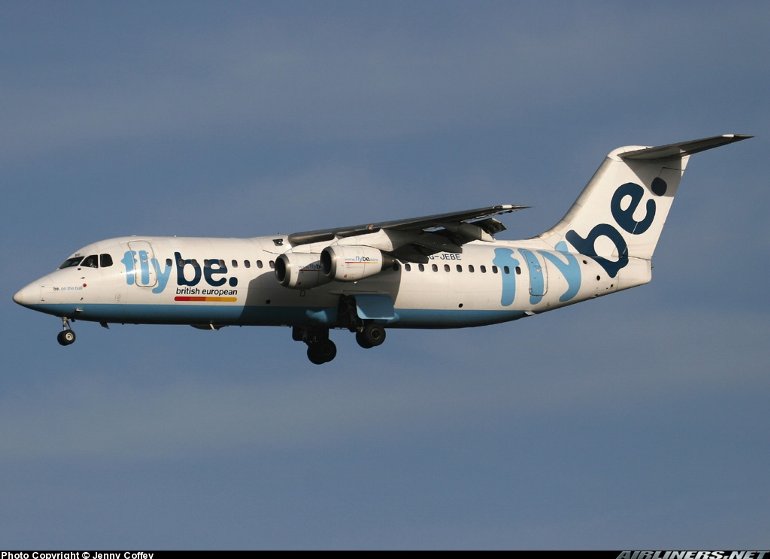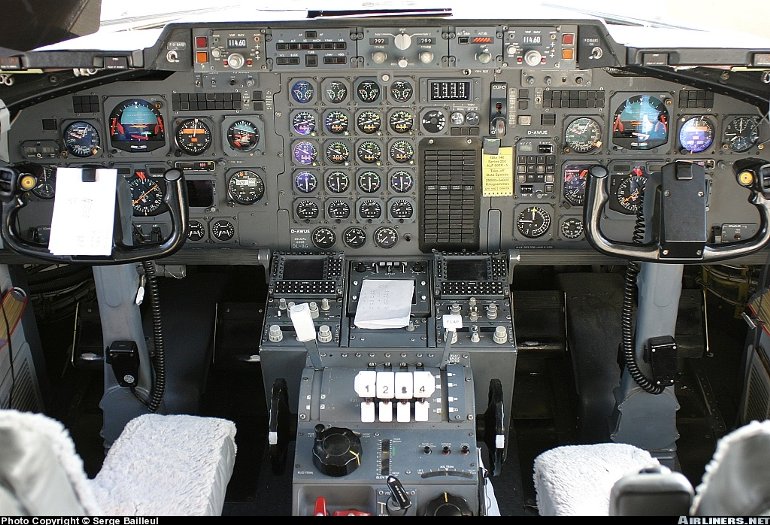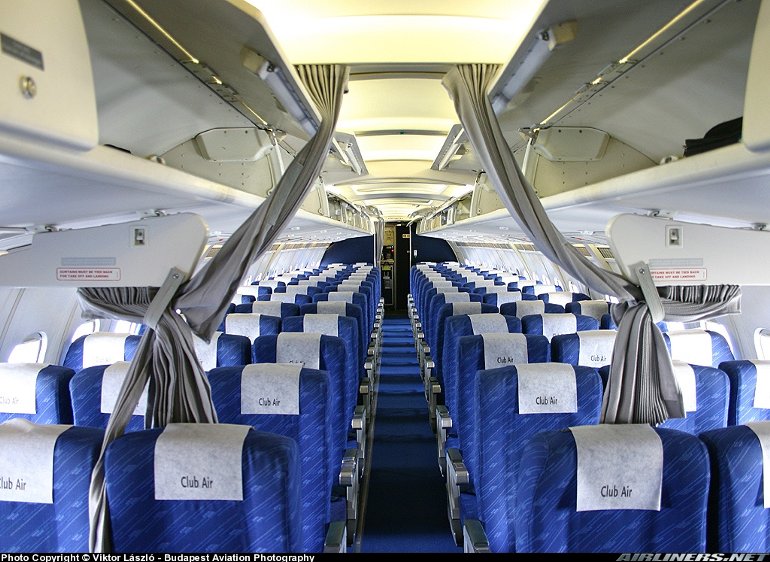Aircraft Technical Data
British Aerospace BAe-146



| Details | |
| Country of Origin | United Kingdom |
| Type | Regional jet airliner |
| History | The BAe-146 family, which includes the Avro RJ and the cancelled RJX (both described separately), is likely to remain Britain's most succesful jet transport program, with 395 built. In August 1973 the then Hawker Siddeley Aviation announced it was designing a short range quiet airliner powered by four small turbofans with British government financial aid. Under the designation HS-146, large scale development lasted just a few months before a worsening economic recession made the risk of the project seem unjustifiable. Development then continued on a limited scale, but it was not until July 1978 that the project was officially relaunched, by which time Hawker Siddeley had been absorbed into the newly created British Aerospace. The resulting BAe-146-100 made its first flight on September 3 1981. Certification was granted in early 1983 with first deliveries following shortly afterwards in May 1983. A VIP version was offered as the "Statesman" which was ordered by the Royal Air Force as the BAe-146 CC2, the standard transport version being the BAe-146 C1. An air refuel receptacle equipped military version, the -100STA flew in prototype form only. The BAe-146-200 is a stretch of the 146-100, and is essentially similar to its smaller stablemate, but has a 2.39m (7ft 8in) longer fuselage, features 35% greater underfloor cargo volume, has slightly different performance figures and heavier weights. The stretch consists of five extra fuselage frame pitches. The first BAe-146-200 made the type's maiden flight on August 1 1982, while the UK Civil Aviation Authority awarded the 146-200s type certificate on February 4 the following year. Versions of the 146-200 include the -200QT Quiet Trader freighter, which has been fairly succesful because of its low external noise footprint, and the -200QC (Quick Change) passenger or freight convertible. The 146-300 is a further stretched derivative of the original short fuselage BAe-146-100, but unlike the midsize 200 series, was not developed until later in the 1980s. The first 146-300, an aerodynamic prototype based on the original prototype 146-100, flew for the first time on May 1 1987, with certification granted that September. Like the 146-200, a freighter version of the 300 series is known as the 146-300QT Quiet Trader. The prototype -300 was converted to 146-301ARA configuration, an atmospheric research aircraft operated by the Facility for Airborne Atmospheric Measurements as a replacement for the previously operated Hercules W2. The last of the original 146s were built in 1993, with the series succeeded by the Avro 146-RJ family, described separately. |
| Powerplants | 146-100 - Four 30.0kN (6700lb) Textron Lycoming ALF 502R-3s or four 31.0kN (6970lb) ALF 502R-5 turbofans. 146-200/300 - Four 31.0kN (6970lb) ALF 502R-5 turbofans. |
| Performance | 146-100 - Cruising speed 767km/h (414kt), long range cruising speed 670km/h (361kt). Range with standard fuel 3000km (1620nm), range with max payload 1630km (880nm). 146-200 - Cruising speed 767km/h (414kt), long range cruising speed 670km/h (361kt). Range with standard fuel 2910km (1570nm), range with max payload 2095km (1130nm). 146-200QC in freighter configuration - same except range with standard fuel 1935km (1045nm). 146-300 - Max operating speed Mach 0.73, cruising speed 790km/h (426kt), long range cruising speed 700km/h (377kt). Range with standard fuel 2817km (1520nm), range with max payload 1927km (1040nm). |
| Weights | 146-100 - Operating empty 23,288kg (51,342lb), max takeoff 38,100kg (84,000lb). 146-200 - Operating empty 23,882kg (52,651lb), max takeoff 42,185kg (93,000lb). 146-300 - Operating empty 24,878kg (54,848lb), max takeoff 44,225kg (97,500lb). 146-300QT - Operating empty 23,126kg (50,985lb), max takeoff same. |
| Dimensions | 146-100 - Wing span 26.21m (86ft 0in), length 26.20m (86ft 0in), height 8.61m (28ft 3in). Wing area 77.3m2 (832.0sq ft). 146-200 - Same, except length 28.60m (93ft 10in). 146-300 - Same, except length 30.99m (101ft 8in). |
| Capacity | Flightcrew of two. 146-100 - Single class seating for alternatively 70 passengers at 84cm (33in) pitch five abreast, or 82 passengers six abreast in a 84cm (33in) pitch configuration, or up to 94 six abreast at 74cm (29in) pitch. 146-100QT - capable of carrying standard size pallets or LD3 containers. 146-200 - Max seating in passenger cabin for 112 at six abreast and 74cm (29in) pitch. More typical seating configuration for 85 at five abreast and 84cm (33in) pitch. 146-200QT - Six standard LD3 containers. Max payload 11,827kg (26,075lb). 146-200QC - Max payload 10,039kg (22,132lb). 146-300 - Maximum seating of 128 passengers at six abreast and 74cm (29in) pitch. Seating arrangements also for 100 at 84cm (33in) pitch and five abreast, and 116 at six abreast. 146-300QT - Standard 2.74 x 2.24m (108 x 88in) pallets, or LD3 containers. Max payload of 12,490kg (26,075lb) |
| Production | A combined total of 221 examples of the 146 have been built. 146-100 - 37 (including three VIP examples operated by the Royal Air Force) were built before production ceased in 1992. 146-200 - 113 examples had been built when production ceased in early 1993. 146-300 - 71 examples had been built when production ceased in early 1993. |
| Related Links | British Aerospace BAe-146 |
The backbone of this section is from the The International Directory of Civil Aircraft by Gerard Frawley and used with permission. To get your own copy of the book click here. |
|








